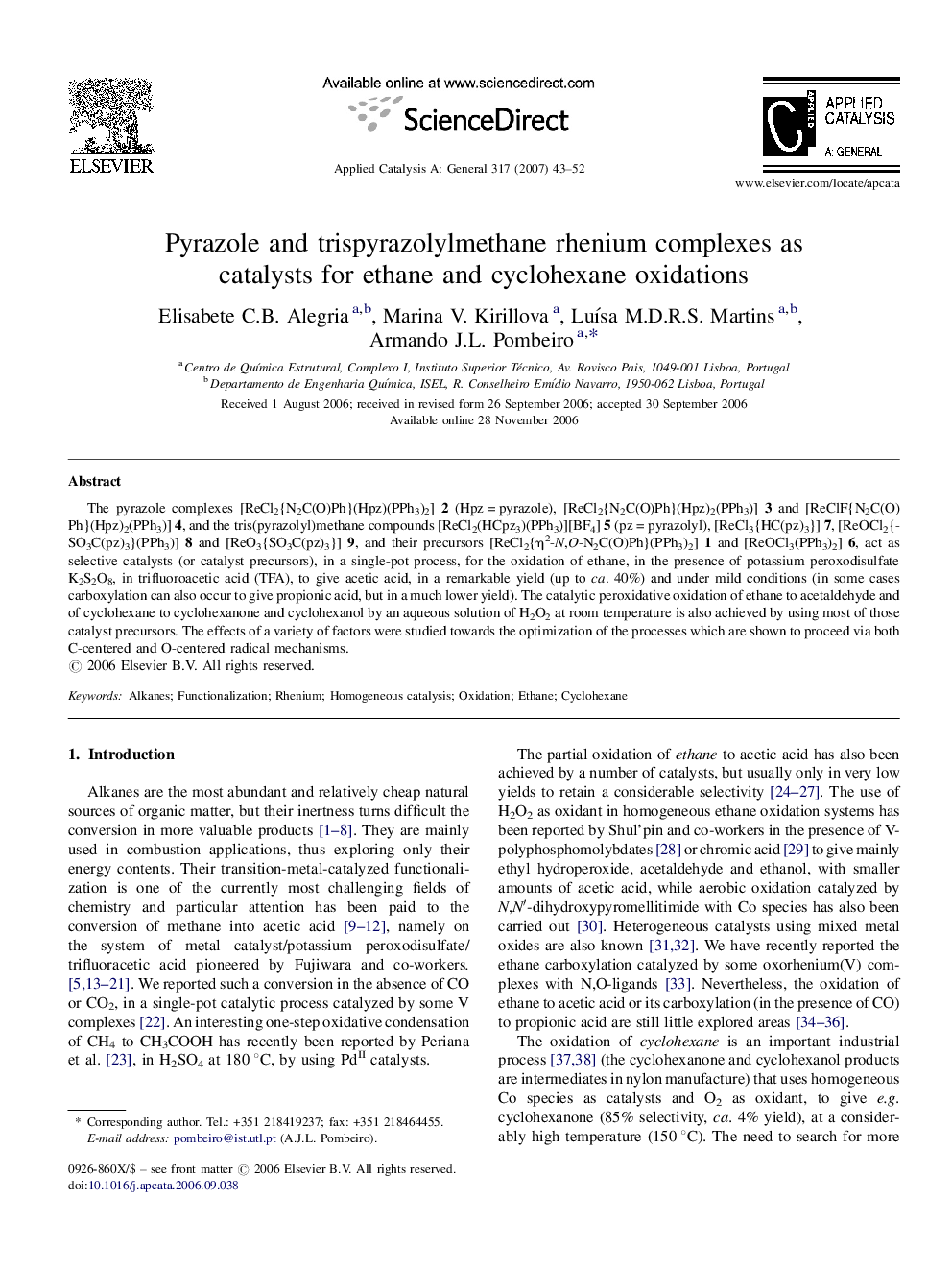| Article ID | Journal | Published Year | Pages | File Type |
|---|---|---|---|---|
| 44453 | Applied Catalysis A: General | 2007 | 10 Pages |
The pyrazole complexes [ReCl2{N2C(O)Ph}(Hpz)(PPh3)2] 2 (Hpz = pyrazole), [ReCl2{N2C(O)Ph}(Hpz)2(PPh3)] 3 and [ReClF{N2C(O)Ph}(Hpz)2(PPh3)] 4, and the tris(pyrazolyl)methane compounds [ReCl2(HCpz3)(PPh3)][BF4] 5 (pz = pyrazolyl), [ReCl3{HC(pz)3}] 7, [ReOCl2{SO3C(pz)3}(PPh3)] 8 and [ReO3{SO3C(pz)3}] 9, and their precursors [ReCl2{η2-N,O-N2C(O)Ph}(PPh3)2] 1 and [ReOCl3(PPh3)2] 6, act as selective catalysts (or catalyst precursors), in a single-pot process, for the oxidation of ethane, in the presence of potassium peroxodisulfate K2S2O8, in trifluoroacetic acid (TFA), to give acetic acid, in a remarkable yield (up to ca. 40%) and under mild conditions (in some cases carboxylation can also occur to give propionic acid, but in a much lower yield). The catalytic peroxidative oxidation of ethane to acetaldehyde and of cyclohexane to cyclohexanone and cyclohexanol by an aqueous solution of H2O2 at room temperature is also achieved by using most of those catalyst precursors. The effects of a variety of factors were studied towards the optimization of the processes which are shown to proceed via both C-centered and O-centered radical mechanisms.
Graphical abstractConversion of ethane to acetic acid, using K2S2O8 as oxidant and TFA as solvent, and catalytic peroxidative oxidation of cyclohexane, using aqueous H2O2 as oxidant and acetonitrile as solvent, are catalysed by Re complexes with pyrazole or tris(pyrazolyl)methane ligands. The reactions occur via radical mechanisms and the effects of various parameters are reported. Figure optionsDownload full-size imageDownload as PowerPoint slide
